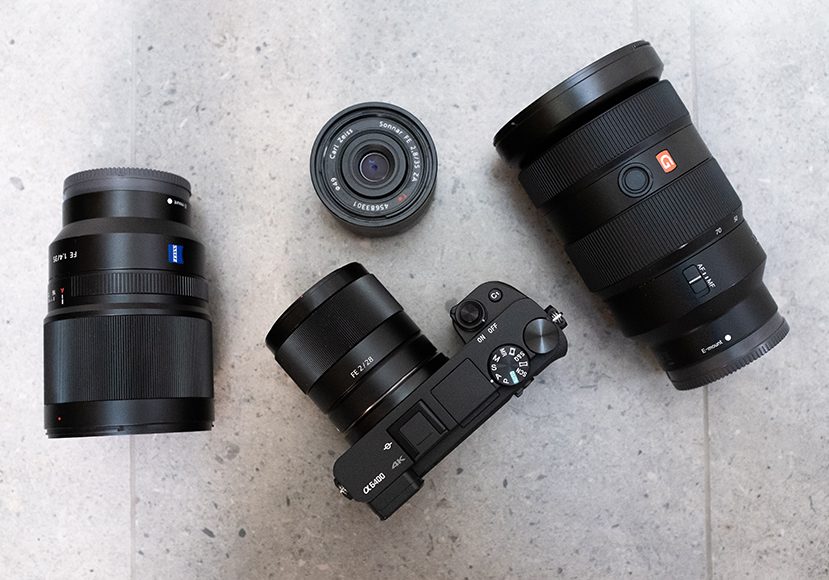
10 Types of Camera Lenses You Should Try in 2023 (+ Buying Tips)
Do you know the 10 types of camera lenses available in 2023? Learn how to choose the next lens for your camera (Simple guide for beginner photographers!)
Learn | Photography Guides | By Ana Mireles
When you’re making your first camera purchase, you’re going to face the difficult task of choosing between all the different types of camera lenses.
A photographer once told me that on a tight budget, I should invest most of it in good lenses, even if that meant getting a second-hand camera.
Since then, I’ve found that most professionals agree that the lens can be the most important part of your gear.
Whether you’re buying your first lens, or expanding your current collection of focal lengths, making the choice between different types of lenses can be difficult.https://shotkit.com/lens-compression/
You need to consider the sort of photos that you like to focus on and the light conditions that this entails. If you often face low light conditions, think about the aperture range, for example.
For beginners, it’s a good idea to buy the camera body with the kit lens. This way, you can use it to learn and understand your needs.
Then you’ll have a better idea of what to look for in your next lens and the pros and cons of each one. (You should also learn how to clean a camera lens, repair and calibrate one too!)
In this article, you’ll find a guide to help you out in this process.
Table of Contents
9 Most Common Types of Camera Lens
Here are the ten main types of camera lenses and their typical focal length:
- Fisheye lens A.K.A. ultra-wide angle (4-14mm)
- Wide-angle (14-35mm)
- Standard (35 – 85mm)
- Short-range telephoto (85-135mm)
- Telephoto (135mm – 400mm)
- Super-Telephoto (400mm +)
- Kit lens (18mm-55mm)
- Macro
- Tilt-shift
The above lenses fall into two main categories: prime lenses and zoom lenses.
Prime lenses offer a fixed focal length, which means that you have to get physically closer or farther away from your subject to change how much of the frame it fills.
Choosing a prime lens does have some advantages though – they are usually sharper and faster (offer a larger maximum aperture), although in most cases, this quality comes at a price.
That said, most camera brands offer an affordable 50mm prime lens, aka a ‘nifty fifty’, usually with a fast f/1.8 aperture, ideal for blurring the background (‘bokeh’) on a budget.
A modern prime lens is usually smaller and lighter than a zoom lens, due to having fewer glass components.
Zoom lenses offer a range of focal lengths in one unit which makes them more versatile – you’re able to capture action up close and far away without moving!
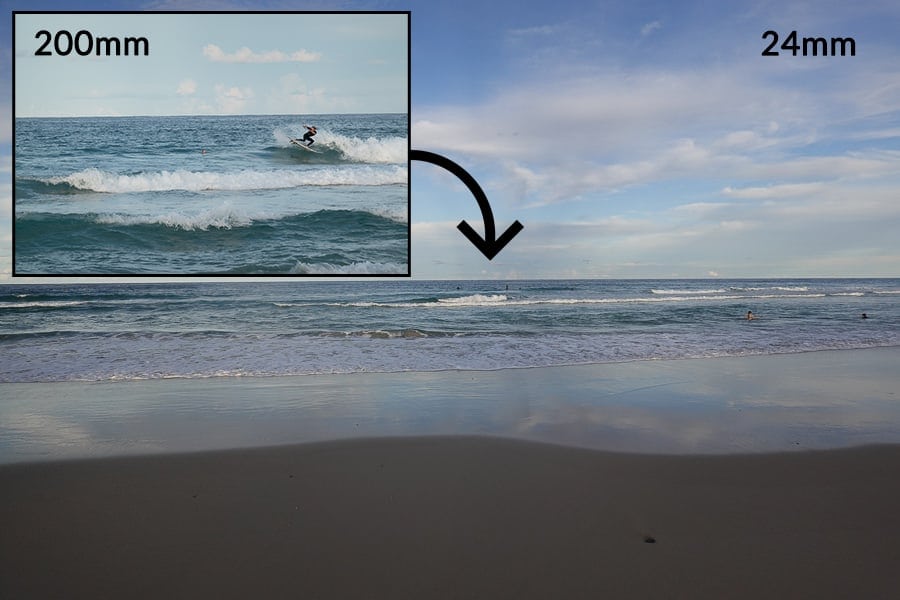
Sony 24-200mm Zoom Lens
A good zoom lens is more expensive than a good prime lens. Also, the image quality at each focal length is rarely as good as a prime at that single focal length.
(You can see other differences in our guide to primes vs zooms.)
The widest aperture zoom lens currently available is f/2 (such as the Canon RF 28-70mm f/2), but such lenses are rare and expensive. Most likely it will be an f/2.8 zoom (such as the Nikon 24-70mm f/2.8), which is also high quality and expensive.
You can save money by buying a ‘slower’ zoom lens with a maximum aperture of f/4 or f/5.6, or one with a varying aperture (as opposed to constant aperture zoom lenses, which most pros use).
Now let’s have a closer look at the various camera lens types to see which types of camera lenses exist on the market. This way you can decide which different lens is best suited to your needs.
Fisheye Lenses
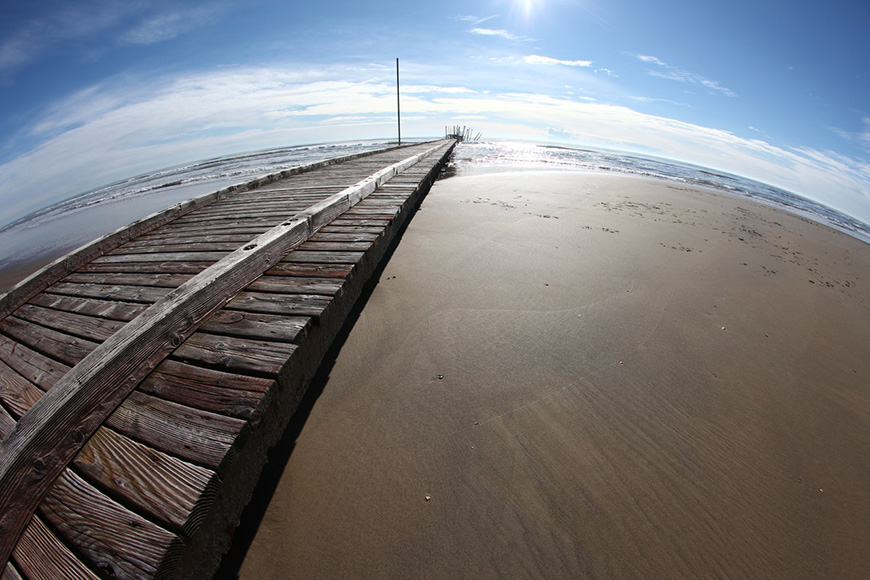
Image Credit: Cris Grafica
A fish eye lens has an ultra-wide-angle of view. The widest being 4mm and up to 14mm focal lengths. After that, they are considered wide-angle lenses.
They are not as common because these lenses tend to distort lines, but they can be useful for abstract or fine-art photography. You’ll often see them used in skate-boarding or action sports photography too.
These types of camera lenses can also be used to achieve specific effects, such as looking through a peep-hole.
However, if you are not looking for any effects but you have to photograph very small spaces, a fisheye lens represents an advantage despite the distortion.
Wide Angle Lenses
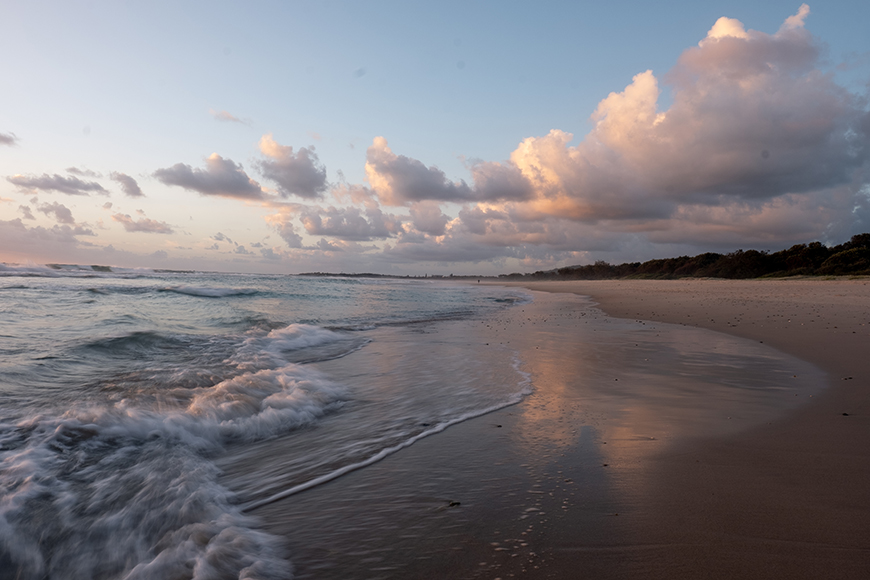
Fujifilm 16mm f/1.4 Wide Angle Lens
Lenses that cover a broader field of view than the human eye are considered wide angle lenses. They range from between 14mm to 35mm or 50mm depending on the size of the sensor in the camera.
(Different types of camera feature different sizes of sensor, such as crop sensor and full frame.)
With wide angle lenses, the lines in the scene can get sometimes distorted, especially as these lenses start approaching fisheye focal lengths.
These camera lenses are often used for architecture and landscape photography because of the wide field of view, and also because you can keep most of the scene in focus when used with smaller apertures.
Standard Lenses
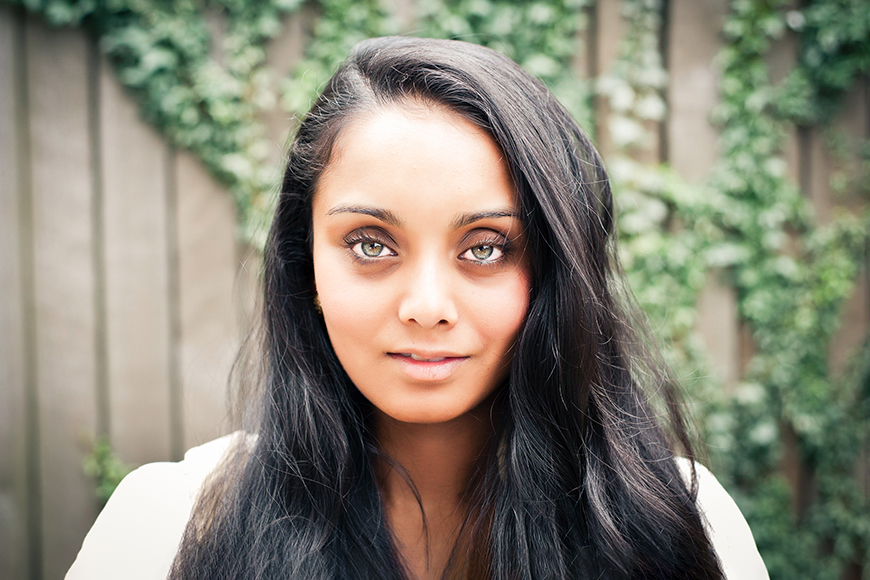
Nikon 50mm f/1.8
A standard lens, also known as a normal lens is intended to replicate what the human eye sees. In film photography, standard lenses had a 50mm focal length because the film frame was a standard size.
In digital photography, the sensor is different, and therefore the ‘normal’ focal length changes too. In this way, the standard for full-frame cameras is a 50mm lens because the sensor size is the same as a 35mm film frame.
Different types of cameras need to apply a specific crop factor to the focal length of camera lenses – most of the time this is already done by the manufacturer so you don’t have to do the math.
These types of camera lenses are used for documentary photography because of the similarity to what you would see with the naked eye. It’s also common to use it for street photography – since this is what a human eye would see in an everyday situation.
Standard lenses are often found with wide apertures (f/1.8 and larger) at reasonable prices. Many professionals agree that a normal lens is a must-have for your photographic equipment.
You can read more about this in our article on what is the difference between 35mm and 50mm?
Short-Range Telephoto Lenses
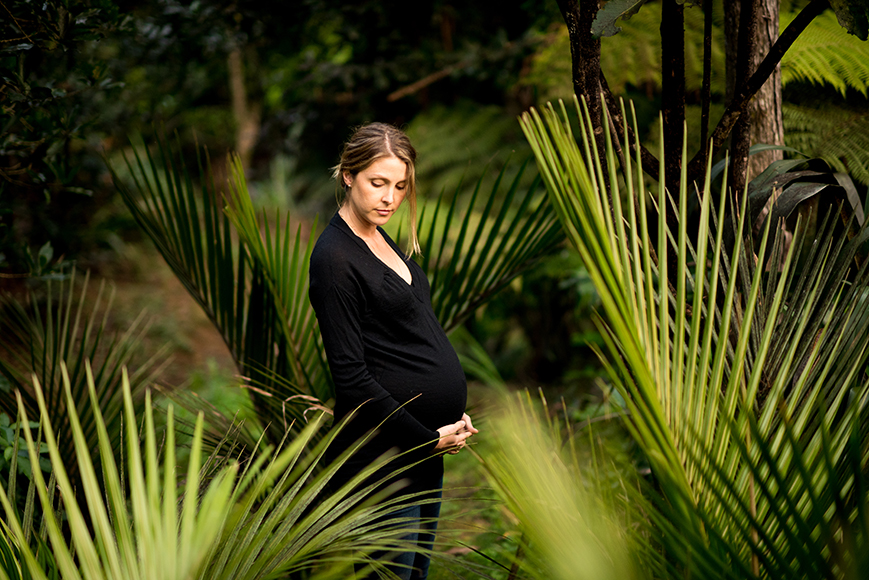
Nikon 85mm f/1.4
These camera lenses cover anything from roughly 50mm to a 135mm focal length – there’s no exact figure, with some photographers saying the limit of short-range telephoto is more like 100mm
In any case, these types of camera lenses offer reasonable reach, and are very handy for portrait photography, providing a flattering look to the human form.
A short telephoto lens shouldn’t incur much distortion, and you can achieve some nice bokeh when shot at wide apertures. (A camera with a bigger sensor will be able to offer a shallower depth of field compared to a camera with a smaller sensor, using the same focal length lens.
Telephotos also help compress the background, bringing it closer to the subject – this can be useful when you need to accentuate mountains behind a model, for example.
Telephoto Lenses
Technically speaking, this category of long lens covers anything above a standard lens. Because it’s so broad, it’s usually divided into three types: short-range, midrange, and super-telephoto.
However, when you talk about telephoto lenses plain and simple, you’re usually referring to the midrange camera lenses. That would mean anything between 135mm – 400mm.
These types magnify the subject allowing you to frame them from afar. They are useful for capturing details in architecture and some types of sports and wildlife photography.
A telephoto lens can also be used for portrait photography, yielding a shallow depth of field and extreme subject: background separation – however, viewers may feel a sense of detachment when viewing these photos, which can make them less impactful.
You can also use a teleconverter to extend the focal length and range of your telephoto lens.
Super-Telephoto Lenses

Image Credit: Harrison Haines
These types of lenses have a longer focal length than 400mm, and consequently, they are usually big and heavy. You’ve probably seen them in sporting events being shot on the sidelines, and they can be used for wildlife photography and astrophotography images too.
Super-telephotos are extremely expensive and therefore usually owned by professionals or by newspapers and agencies.
There are some rare and extreme cases that go up to 5200mm but the most common (and practical) range for this type of lens is between 600mm and 800mm.
Kit Lenses
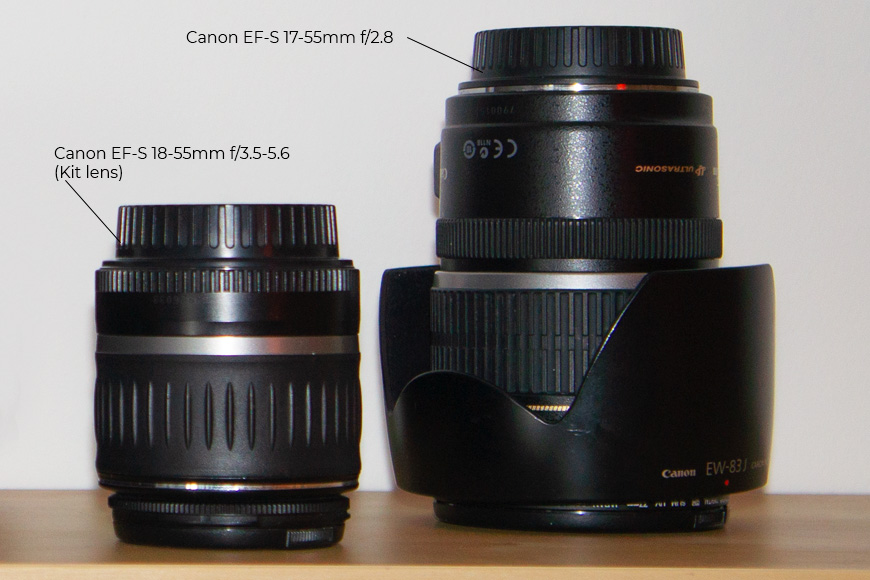
Image Credit: Ana Mireles
Normally these are zoom lenses with an 18mm – 55mm range of focal lengths. They are known as kit lenses because they are sold together with the camera body.
While they can be a great starter lens, they do come with certain limitations. Most photographers will ‘out-grow’ this type of lens after a while, and decide to swap it with a zoom lens or a prime lens – see our guide: what lens should I buy after a kit lens?
Usually, these types of camera lenses have a maximum aperture of f/3.5 at the shortest focal length and f/5.6 at the longest, making them unsuitable for low-light photography, or when you crave some shallow depth of field (aka bokeh) in your images.
Macro Lenses
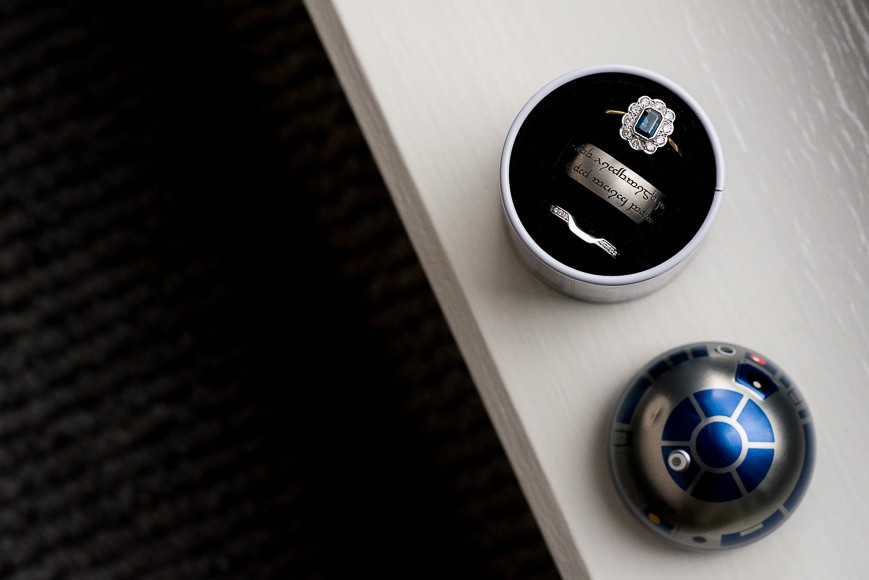
Tamron 90mm f/2.8
A macro lens is not defined by its focal length. Instead, a wide-angle lens, a standard, or a telephoto lens can have macro capabilities if it has a short focus distance.
With macro lenses, you can focus on extremely small subjects. Telephoto macro lenses are usually easier to use since the extra working distance they provide means that you don’t block any light from hitting the subject (macro photography requires lots of light!)
These lenses are used for nature photography such as shooting insects, flowers, or droplets. They are also useful in commercial photography for jewellery and other small products.
You’re not just limited to macro photography, either – macro lenses can also use them for taking portraits, to really highlight a close-up of a model’s eye, for example.
A macro lens usually has a very small depth of field – that’s why product photographers often use a post-production technique called focus stacking.
All the major brands offer a macro lens, as well as many third party manufacturers – check out our guide for the best macro lens for Canon, Nikon, Sony or Fuji.
You should also read our guide to the best focal length lens for product photography.
Tilt-Shift Lenses
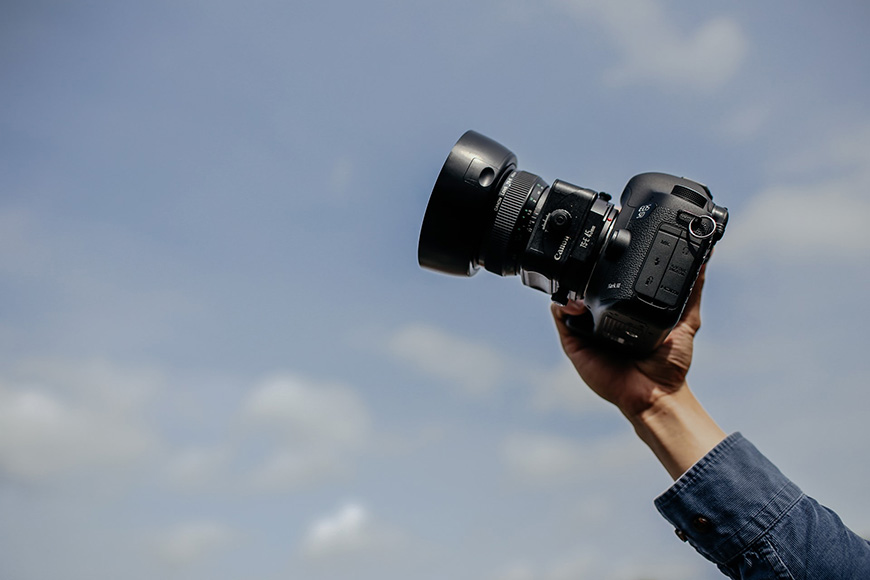
Image Credit: Tom Pumford
These lenses allow you to modify the focal plane to correct perspective and other distortions – that’s why they are mostly used in architecture photography.
They only come as prime lenses, in other words, with a fixed focal length. Normally they are wide-angle lenses but some brands do have them in a standard focal lens format too.
Recently, tilt-shift lenses have gained popularity in wedding photography, or for shooting art-house movies where creative control of focus is required.
These types of camera lenses are specialist in their use, and thus, command high price tags. You can sometimes ‘fake’ the look of tilt shift in post-production or by using a LensBaby, or similar novelty lens.
Tilt-shift lenses are typically expensive and can only be used for certain types of photography – some photographers prefer to rent camera lenses like tilt-shifts or expensive super-zooms since they work out better value in the long run.
Camera Lens Characteristics
These are the factors that determine how the various types of lenses affect the final look of your photo:
- Focal Length – This is what determines the angle of view. The range can be from ultra wide-angle or fisheye to super-telephoto. The focal length also has an impact on the depth of field of your images. Wide-angle lenses usually have a wider area in focus than telephotos. The slowest shutter speed that you can use to avoid camera shake when you’re shooting handheld is also linked to this. The longer the focal length, the fastest you need to shoot. Finally, the focal length also changes the perceived distance between your subjects. When you use a telephoto lens you have to stand further away and this causes something called lens compression. This means that your subjects seem to be closer to each other than they would look if photographed with a wide-angle lens.
- Maximum aperture – Another factor to consider is the maximum aperture. Lenses determine how much light passes through and reaches the sensor by something called a diaphragm. This makes the aperture wider to let more light in, and smaller to let less light through. The f-number determines if the lens is ‘fast’ or not. This relates to the shutter speed that you can use in low light situations. Also, a wider aperture means that the depth of field is narrower and you can make your subjects stand out by blurring the background.
- Bokeh – This refers to the out-of-focus part of your photo. Usually, a blurred background is used as part of the aesthetic look. Each lens renders a different bokeh effect because it depends on the shape of the aperture of the diaphragm and the aberrations of the lens. This can be an important factor if you shoot a lot of portrait photos.
- Age – image quality may depend on when the lens was manufactured – for example, older lenses usually don’t include fancy coatings to avoid flare, or may exhibit heavy distortion or vignetting. Also, if you’re buying used lenses, you’ll need to be sure about how they’ve been used and maintained – dust, scratches and mold may affect their performance.
What Types of Lenses in Photography Should You Buy?
As you can see, a camera lens is much more than just its focal length and the angle of view. Before buying one that won’t be useful for you to grow as a photographer, you need to consider all the various camera lens specs.
Of course, your budget is one of the first issues, but then you need to decide how is this money better spent!
You need to buy a lens that works best for you. The first thing to consider is compatibility. Do you have a full-frame camera or cropped sensor?
Even if you get your lens from the same brand as your camera, there are some compatibility issues that you need to be aware of.
For example, Canon has EF-S lenses for its crop sensor cameras and EF for the full-frame ones. You can always use the EF lenses with the midrange cameras, but you can’t use EF-S lenses with professional ones.
You can also buy lenses from third-party manufacturers, in which case you should check the compatibility with your camera specs and brand.
Then you need to decide between prime lenses and zoom lenses. This is more than just a question of focal point or variety in the field of view.
The choice has an impact on size and weight, having a single lens or needing more than one, the quality of the photos, the depth of field, etc.
And of course, you need to determine the focal lengths. This can be done based on the subject or the kind of photos you normally take. If you’re a portrait photographer, look at telephoto lenses; if you do street photography look for normal lenses.
For nature photography, you can consider a macro lens for closeups or a wide-angle lens for a landscape scene. If you need a wide-angle lens, consider the lens distortion, and see if a fisheye lens would make sense.
Digital Camera Lenses: Final Words
As you can see, camera lenses are a very important part of your photographic gear!
Choosing the right type of lens can improve your photography and differentiate your work.
Hopefully, this guide helped you make sense of all the different camera lenses available here in 2023.
Feel free to share your doubts or ask for advice about your next dream lens in the comments section. You should also check out our guide to buying a lens cleaning kit.














